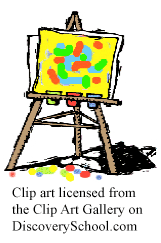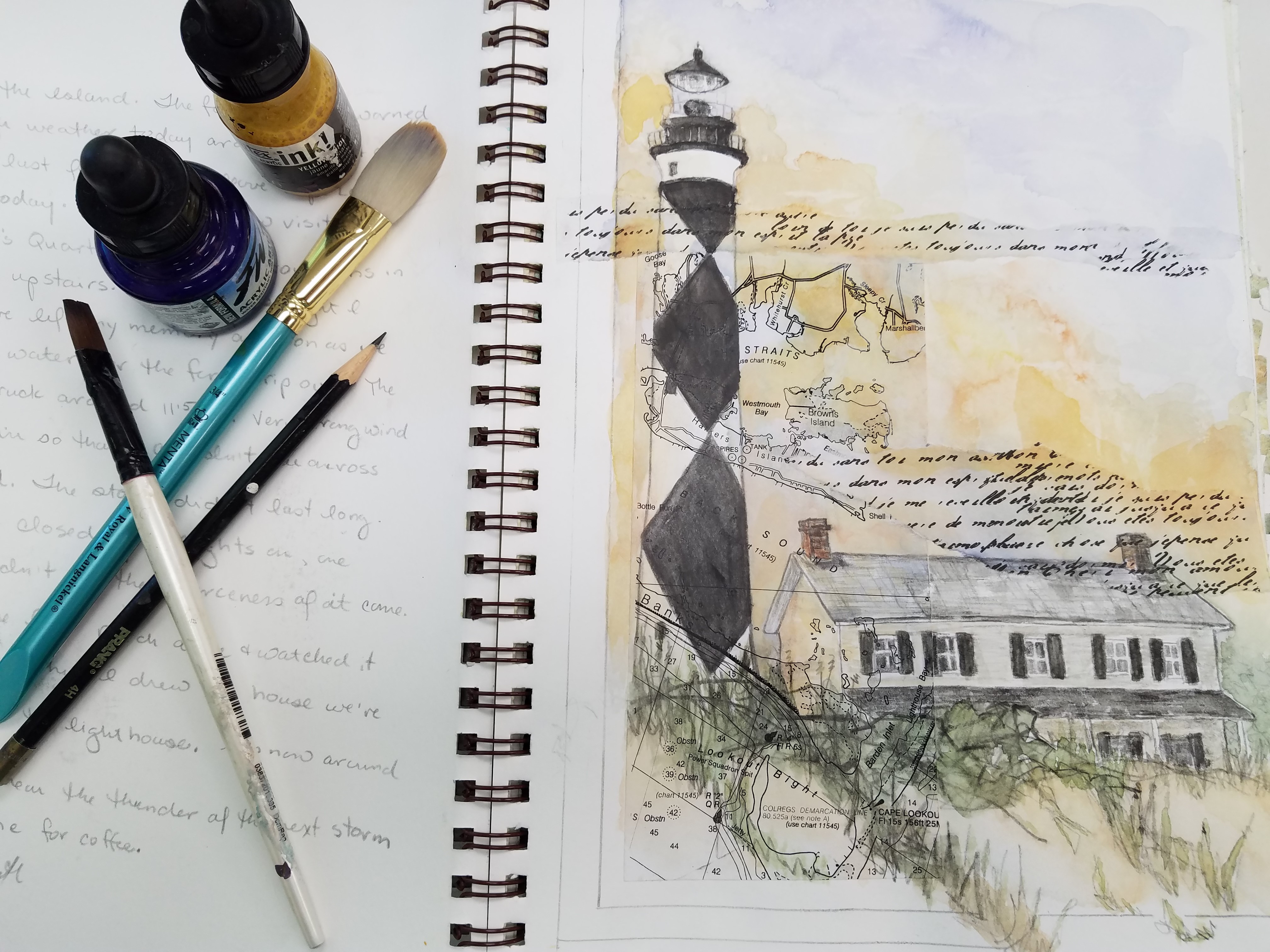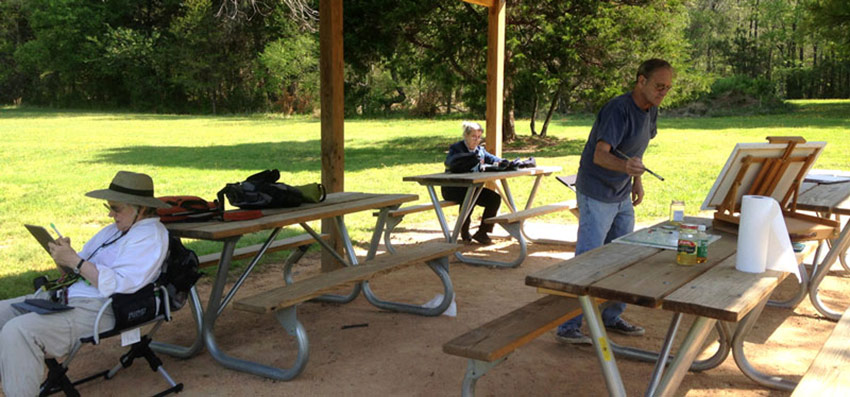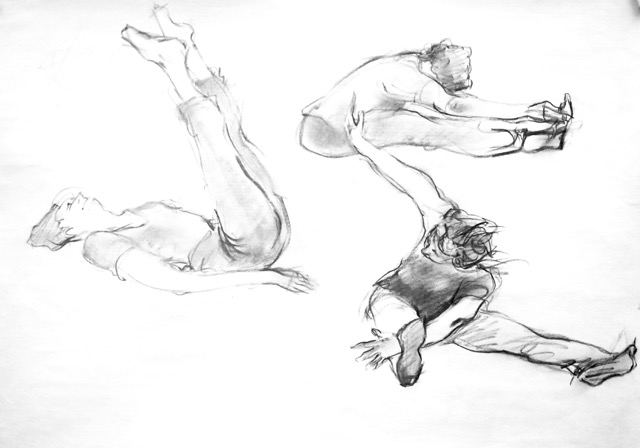Finishing up a yearlong art project left me drained and at loss of creative energy…
 Once, a friend of mine who was an emerging artist at age fifty-one expressed that she always had a sense of terror when she faced a blank sheet of watercolor paper. The weight of all the years she had desired to paint, but had put off trying, came in full force to haunt her. In a flippant reply I said, “Don’t worry, no one ever died of ‘watercolor.’ Just DO IT!” Later, I felt badly that I had popped off like that, and I sat down to write her a long letter. Here are excerpts:
Once, a friend of mine who was an emerging artist at age fifty-one expressed that she always had a sense of terror when she faced a blank sheet of watercolor paper. The weight of all the years she had desired to paint, but had put off trying, came in full force to haunt her. In a flippant reply I said, “Don’t worry, no one ever died of ‘watercolor.’ Just DO IT!” Later, I felt badly that I had popped off like that, and I sat down to write her a long letter. Here are excerpts:
Part of the “freeing” that I feel must happen in the hearts and minds of anyone who attempts to express themselves through art (be it painting, dance, voice, whatever) is to learn that the “making of art” is no more “special” nor more “significant” than any other seriously applied human endeavor. It simply should be allowed to transpire without fanfare. It ought to be as simple and as natural as breathing, sleeping, walking.
We are raised with the unfortunate misinformation that artists must possess this thing called “genius” in order to truly be called an artist. Further, the Western art historical canon has preached that these “geniuses” were born possessing all the possible talents that are required to make “masterpieces.” And need I mention that for eons and eons, the “genius” so portrayed was always male. [Or, they were such hale and hardy women that they simply couldn’t be ignored-Rosa Bonheur, Georgia O’Keefe, etc.]
The truth is, even the so-called “child prodigies” of the Western historical lore (Michelangelo, Bernini, Picasso) had to learn to perform the skills of their art one step at a time. They crawled, and then they walked-perhaps their advantage was that they had earlier encouragement and were given extreme permission to do so. Have you ever looked at very early works by Picasso or other heralded masters? You should. It will make you feel much better about your own first efforts.
In my opinion, self-doubt is the single greatest killer of creativity known to humankind.
It is sad to me that so many people suffer this particular self-doubt. I hear it all the time in two phrases I’d like to banish from all human conversation: “I can’t draw a straight line without a ruler.” [Duh! Neither can I!] And, the other most often expressed, “I can’t even draw stick people.” [It’s okay, people don’t look like sticks anyhow!]
Many of these self-doubts came to us from our early teachers who said, “That doesn’t look like a _________!” Fill in the blank with whatever was on the still-life table that day, or whichever classmate you were attempting to portray. Many of the teachers who taught my generation [perhaps even contemporary teachers, too?] said these things because they didn’t know better and they didn’t possess the ability to give positive, constructive criticism that our tender souls could hear with an open spirit.
These are the ghosts and demons of self-doubt, and have no place at the worktable of the creative heart. Drawing, painting, sculpting (and any other medium) are means of human expression that, had we been trained and practiced in them since childhood-as we were with reading, writing, and math-would be just as useful to us now in the expression of our ideas, feelings, and intangible thoughts. It’s simply a matter of training and most of all, practice. Can you imagine a classroom where equal attention is given to drawing that is given to writing? In my dreams this classroom exists.
Here’s my advice for the frightened, self-doubting beginner? Pretend you are once again a student in kindergarten. Seriously! Tie back your hair and put on one of your dad’s old white dress shirts for a smock. Pick up a brush filled with paint or ink, put it to paper, and PLAY! [Don’t care what others think.] Play and play some more. [Don’t even think of what others think.] Play in this way with any new tools and materials for one hundred hours or more. [Don’t give any attention to what others think.] Fifty hours won’t do it, nor will ninety-nine. In this way, you will learn the possibilities and limitations of any creative medium. You will know the ins and outs of it. You will know how you can use it to express yourself. You will have learned that mastering a creative tool or method is actually an ongoing pursuit, albeit one you may advance at your own pace. At the very least, you will have made a wonderful new beginning.
It doesn’t matter a whit when one begins one’s creative life-it is always a matter of how diligently one applies oneself to the process and the play. And remember, “No one ever died of watercolor.'”
For more, terrific thoughts on the concept of “late bloomers” you will enjoy reading this article by Malcolm Gladwell.



